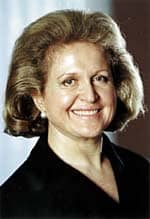The key to establishing successful therapist-driven protocols is working with those health care team members that can support respiratory therapists the most.

Protocols and Guidelines
Approximately 8 to 10 years ago, our respiratory care department worked with pulmonologists and cardiac surgeons on a weaning protocol for coronary artery bypass graft (CABG) surgical patients. This is when we began to take small steps with protocols. The process had proven to be very successful in decreasing postoperative ventilator hours and the number of blood gases per case. We had cut our wean time in half and decreased the number of blood gases per case from an average of five to an average of one or two. The next step would be to develop oxygen and treatment protocols using our medical directors’ input as well as that of other physicians who would be big volume users of these protocols. We would not charge for this service, but it would take labor time to evaluate and assess the outcomes of care. At the same time our productivity standard (charge-generating procedures) would be decreasing, our labor costs could possibly stay constant. So it could appear we were being less productive. However, the protocol service would still impact the bottom line positively due to having a large population of Medicare patients whose care was reimbursed on the diagnosis related group (DRG) based system. If we were successful in giving only what was indicated by the AARC clinical practice guidelines, this would eliminate unnecessary procedures and therefore decrease the overall costs of care. Once the protocols were devised, we had to take them and the concept of the service to the senior administration, risk management, pharmacy, and various physician committees to gain approval to start the pilot program.
Staff Changes
This therapist-driven protocol concept would create some changes among the respiratory care staff. They would have to become critical thinkers, understand the AARC clinical practice guidelines, and become used to offering input into patient care, as well as learn to take pride in their daily achievements. We already had some personnel who performed in this manner, but we had to convert everyone for this concept to be successful. Unfortunately, not all staff will readily see the need to change, so be prepared to address this issue. Everyone had to take responsibility for the outcome of the therapy that was being administered. If the therapy did not affect the patient’s outcome in a positive manner, then it should not be done. Classes were held to educate therapists on protocols and clinical practice guidelines. We also had meetings once a week to present protocol cases to the medical director. This taught the staff how to make presentations to physicians and how to anticipate and answer any questions that the physicians could possibly ask. The staff had to use patients’ chest radiographs in their presentations, which sharpened skills that were involved in such reviews. The meetings began with the medical director and original four protocol therapists who were performing the evaluations and then grew into the entire therapist staff working that shift to present a case. This enabled the staff to feel more confident in talking to physicians about patients. This process occurred over a 2-year period and now is a part of department orientation.
PI Monitoring
The staff had to sharpen their note-taking skills following their assessments of patients. This was monitored through checking their notes to be sure pertinent details were included. A basic template was designed and the team was educated on its use. The performance improvement (PI) monitor would check the notes for certain details that had been established through the template. Feedback was reviewed with individual therapists as needed and the overall monitor results were shared in staff meetings on an ongoing basis. We also needed a way to show that patient status was improving. This was initially done in a paper format, but now is done through a computer-charted acuity system. This way we can look online for any protocol patients and see how they trended through this process. We could also monitor if the care was efficient, for example, if we were discontinuing the care or moving the patient to a home regimen in a timely manner. It also pinpointed those therapists who were hesitant in making decisions. The other PI monitor captured the total number of patients who were protocoled for the month. This figure grew from 20 patients per month in January 1998, to 1,600 patients per month currently. The number of procedures that the protocol service impacted was also tracked showing a large decrease in some procedures such as IPPB procedures.
The respiratory care staff had to become good marketers. We educated various groups including nursing, case management, administrative leadership, and physician groups. We accomplished this through staff meeting presentations, performance improvement meeting presentations, articles in hospital publications, physician packets, and poster presentations in the physician lounge and on the nursing units. We also partnered with pulmonologists to utilize the protocol service and oversee our processes. They were our physician champions. We also asked for partnering between nurses and respiratory care staff so they could help support this concept to the physicians they worked with daily.
As the paradigm shifted with our staff, the perception of our fellow teammates, physician, nurses, and other staff changed as well. We began to be looked upon as valued team members contributing to patient care. We were asked to participate, as well as lead, the DRG focus committees that the hospital had established. The DRG focus teams were started to gain best practice patterns for specific DRGs as well as improve outcomes, lower the cost of care, and decrease the length of stay with these patient populations. Our respiratory care protocol orders were now on preprinted sheets for these specific DRGs. We were also called to triage in the emergency department when a patient entered with a respiratory complaint. This gave us an opportunity to promptly begin treatment for asthma patients as well as any other breathing emergencies.
We also moved from a department that had a high turnover rate and problems recruiting new staff to a decreased turnover rate. The majority of the turnover is now due to a spouse transferring, temporarily leaving to obtain continuing education, or leaving the profession all together.
Therapists are able to perform what they were taught in registry school. We have a little more than 100 staff members, which represents about 85 full-time equivalents. The skills of our group of technicians have advanced due to making assessments of their care and communicating needed changes to the protocol therapists.
Advanced Protocols
In February 2000, we gained approval by our physician leadership team for any patients receiving respiratory care procedures to automatically become treatment and oxygen protocol patients. Due to the advancement in clinical skills, physician support, positive outcomes, and clinical leadership in patient care, we were able to go beyond oxygen and treatment protocols and into ventilator protocols for patients outside the cardiovascular population. Over the past year and a half, we have piloted our ventilator protocol and gathered our data. In January 2001, we received permission to use these ventilator protocol/guidelines on every ventilated patient after gaining an initial approval from the physician to start the weaning process. With this process, we found increasing numbers of patients weaned by respiratory therapists and decreasing annual ventilator charges with no increased incidence of reintubation due to early extubation.
Keeping in touch with what other hospitals across the country have done or are doing is very helpful. We have regarded James Stoller, MD, and his Cleveland Clinic Team, Rick Ford, RRT, at the University of California, San Diego, Judy Tietsort, Neil Macintyre, MD, and other leaders in the field as the gold standards in protocol services. Even though their exact process may not work in every facility, the concept can be used through working with physicians to develop this service.
Outcome Data
Keeping track of outcome data is very important to show what can be accomplished through this type of service. This has to start at the very beginning of getting the service established. Even though we have had a 23%-plus patient growth in the last 3 years, we have seen a decrease in most of our procedures, as well as improved alignment between the therapy administered and the clinical practice guideline indications for that therapy.
Another beneficial outcome of this service is accomplishing 95% of what is ordered. The 5% that is missed is due to the patient being gone for diagnostic procedures, treatment, or surgery.
The new/enhanced services that we have worked on over the past year are as follows:
• balloon pump training and first call for the service with cardiac catheter laboratory support;
• active role in pulmonary rehabilitation program 3 days per week;
• almost 80% of the intubations outside of surgery are performed by respiratory therapists;
• increased educational opportunities for patients, families, and other hospital staff outside the department;
• opening of a second bronchoscopy suite;
• decreased average postoperative CABG ventilator wean time to fall between 2 to 4 hours; and
• preoperative teaching for more than 90% of our CABG patients per month.
We shifted labor hours that were spent with procedures that did not change outcomes to time spent performing procedures and processes that make a difference and enhance the quality of care.
Recipe for Success
Succeeding with a protocol service requires the following: an interested group of respiratory care practitioners; medical director; key physicians; developing the protocols; gaining approval; educating staff; establishing PI monitoring system; providing performance feedback; marketing the service; gaining support of other health care team members (nurses, case managers); continuing to refine and develop the service; empowering the staff; raising the bar on professionalism; and developing a passion for high-quality care.
Susan Y. Parsons, RRT, is director of respiratory care at Baptist Memorial Hospital East, Memphis, Tenn.










